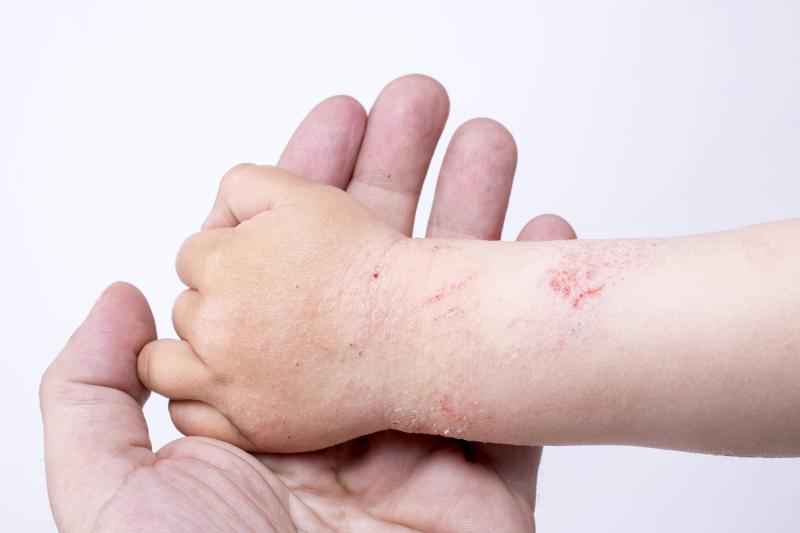
Disease severity, rather than sociodemographic factors, is the strongest determinant of health-related quality of life (HRQOL) in children with atopic dermatitis (AD) and their caregivers, according to a recent Singapore study.
“This study provides an in-depth view of the AD-related quality of life among children and their caregivers in Singapore,” said researchers. “It helps us understand the complex relationship between sociodemographic factors, disease severity and quality of life in AD patients.”
Of 559 paediatric AD patients (mean age, 6.6±4.6 years; 50 percent girls) participating, 56 percent had mild disease and only 11 percent had severe AD. Majority of the caregivers (81 percent) had at least a tertiary level education. [Sci Rep 2019;9:15990]
Mean HRQOL scores were 8.76±5.76 and 8.76±5.46, as measured by the Infants’ Dermatitis Quality of Life (IDQOL) and Children’s Dermatology Life Quality (CDLQI) indices, respectively. The subscales of itching and scratching and sleep disturbances were strong drivers of the IDQOL scores, while symptoms and sleep disturbances had the largest impact on CDLQI.
QOL showed significant variations according to disease severity groups. For example, IDQOL scores for itching and scratching (p<0.001), mood (p=0.002), playing or swimming (p=0.031), discomfort with clothing (p=0.002), bath time problems (p<0.001), enjoying a family activity (p=0.002), and total time disturbed (p=0.013) all grew progressively worse with increasing disease severity.
The same was true for the following CDLQI subdomain scores: symptoms and feelings (p=0.011), leisure (p=0.007), school or holiday disturbance (p<0.001), personal relationships (p=0.022), sleep affected (p=0.002), and treatment (p<0.001).
Multivariable regression analysis confirmed the primary findings. Both moderate (incidence rate ratio [IRR], 1.42, 95 percent confidence intervals [CI], 1.20–1.67; p<0.001) and severe (IRR, 1.72, 95 percent CI, 1.32–2.24; p<0.001) AD significantly impaired QOL, as measured by IDQOL. In comparison, only moderate disease affected CDLQI scores (IRR, 1.08, 95 percent CI, 1.02–1.14; p=0.01).
Diseases of greater severity likewise significantly impaired QOL scores in the symptoms and feelings and sleep disturbances subdomain of both the IDQOL and CDLQI.
Notably, as the HRQOL of the child deteriorated, so did the caregiver’s physical (IRR, 0.99, 95 percent CI, 0.99–1.00; p<0.001) and mental (IRR, 0.98, 95 percent CI, 0.97–0.99; p<0.001) health. Severe AD in the child also significantly impaired caregiver physical health (IRR, 0.94, 0.89–0.99; p=0.03).
“Findings from this study have shown that the management and treatment routine of AD needs to be adapted to incorporate quality of life assessment in affected patients. In addition, preventing deterioration of the disease seems a key point in treatment,” said the researchers.
Unfortunately, because it is considered as too time-consuming, complete and comprehensive assessments and surveillance of symptoms are rarely performed, they added. “Therefore, more convenient and efficient tools need to be deployed in the future to meet the current needs. Moreover, treatment should focus beyond the disease and more attention should be directed to the symptoms and feelings of children and their caregivers.”